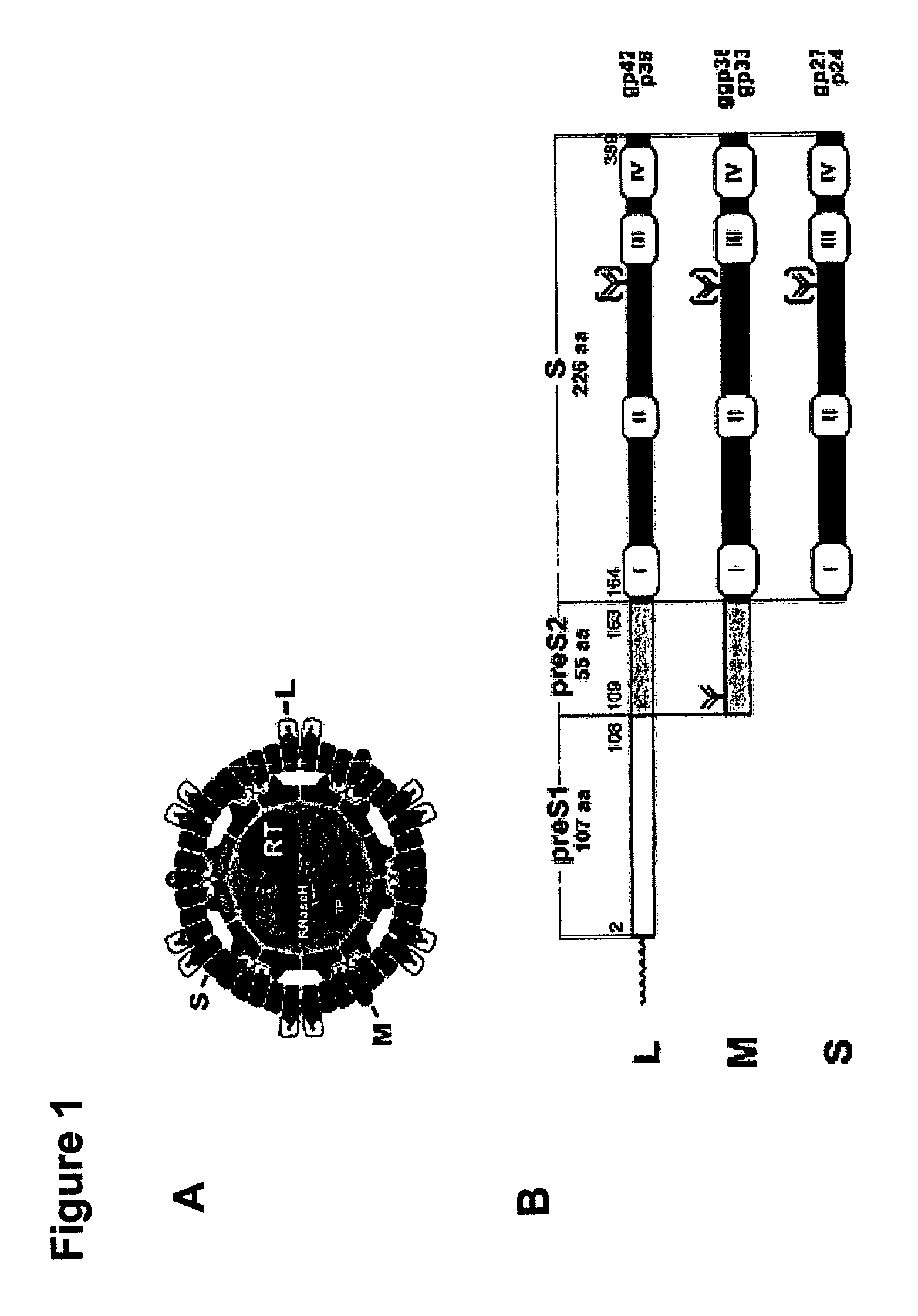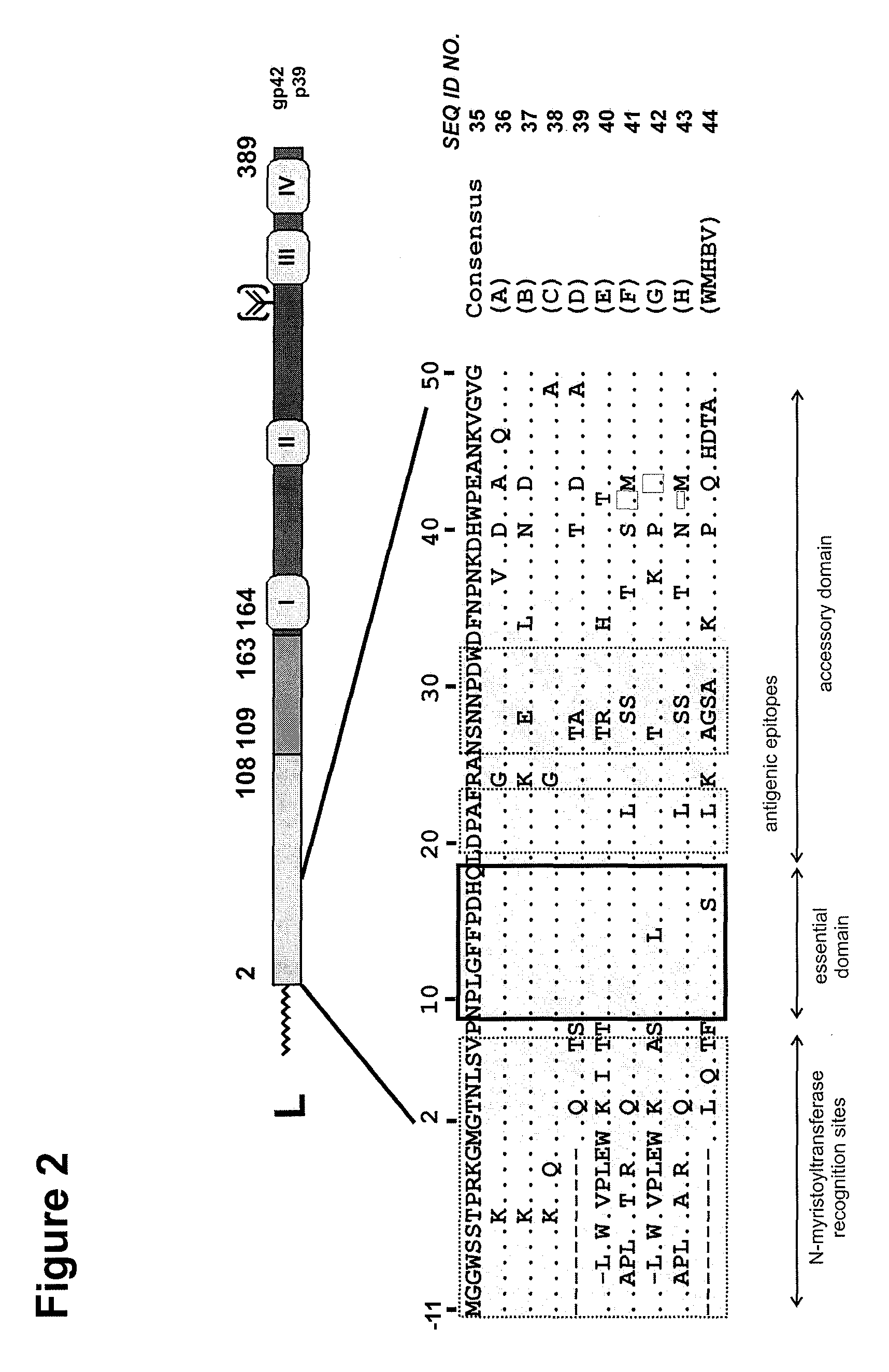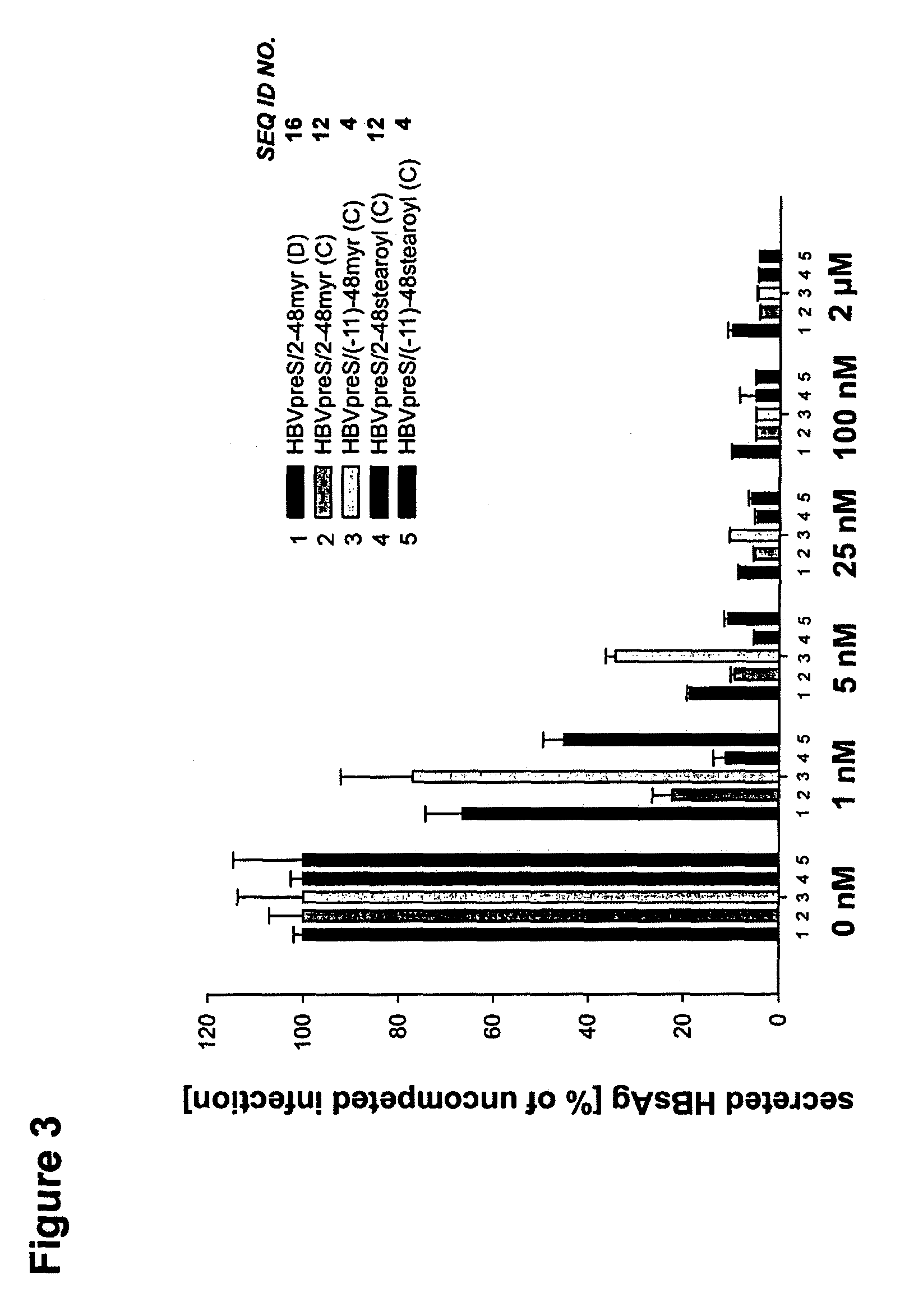Hydrophobic modified pres-derived peptides of hepatitis B virus (HBV) and their use as HBV and HDV entry inhibitors
a technology peptides, which is applied in the field of hydrophobic modified pres-derived peptides of hepatitis b virus (hbv) and their use as hbv and hdv entry inhibitors, can solve the problems of low hbv infection rate, high cost, and high cost of treatment and prevention
- Summary
- Abstract
- Description
- Claims
- Application Information
AI Technical Summary
Benefits of technology
Problems solved by technology
Method used
Image
Examples
examples
Methods
[0320]Synthesis of Hydrophobic Modified preS-Derived Peptides of HBV
[0321]The synthesis was carried out as described e.g. in (16).
[0322]Cell Lines and Primary Cell Cultures.
[0323]HepaRG cells were grown in William's E medium supplemented with 10% fetal calf serum (FCS), 100 units / ml penicillin, 100 μg / ml streptomycin, 5 μg / ml insulin and 5×10−5 M hydrocortisone hemisuccinate (16). Cells were passaged 1 / 5 every two weeks by trypsination. Two to three weeks before infection cell differentiation was induced by adding 2% DMSO into the maintenance medium. The medium was exchanged every 2-3 days.
[0324]Infection Competition Assays.
[0325]As an infectious inoculum, a 50-fold concentrated culture supernatant of HepG2 clone 2.2.15 (23) cells was used, because of an unlimited supply and a constant quality. It was prepared from freshly collected supernatants by precipitating viral particles in the presence of 6% polyethylene glycol (PEG) 8000. The pellet was resuspended in phosphate buffe...
PUM
| Property | Measurement | Unit |
|---|---|---|
| weight | aaaaa | aaaaa |
| half life time | aaaaa | aaaaa |
| hydrophobic | aaaaa | aaaaa |
Abstract
Description
Claims
Application Information
 Login to View More
Login to View More - R&D
- Intellectual Property
- Life Sciences
- Materials
- Tech Scout
- Unparalleled Data Quality
- Higher Quality Content
- 60% Fewer Hallucinations
Browse by: Latest US Patents, China's latest patents, Technical Efficacy Thesaurus, Application Domain, Technology Topic, Popular Technical Reports.
© 2025 PatSnap. All rights reserved.Legal|Privacy policy|Modern Slavery Act Transparency Statement|Sitemap|About US| Contact US: help@patsnap.com



